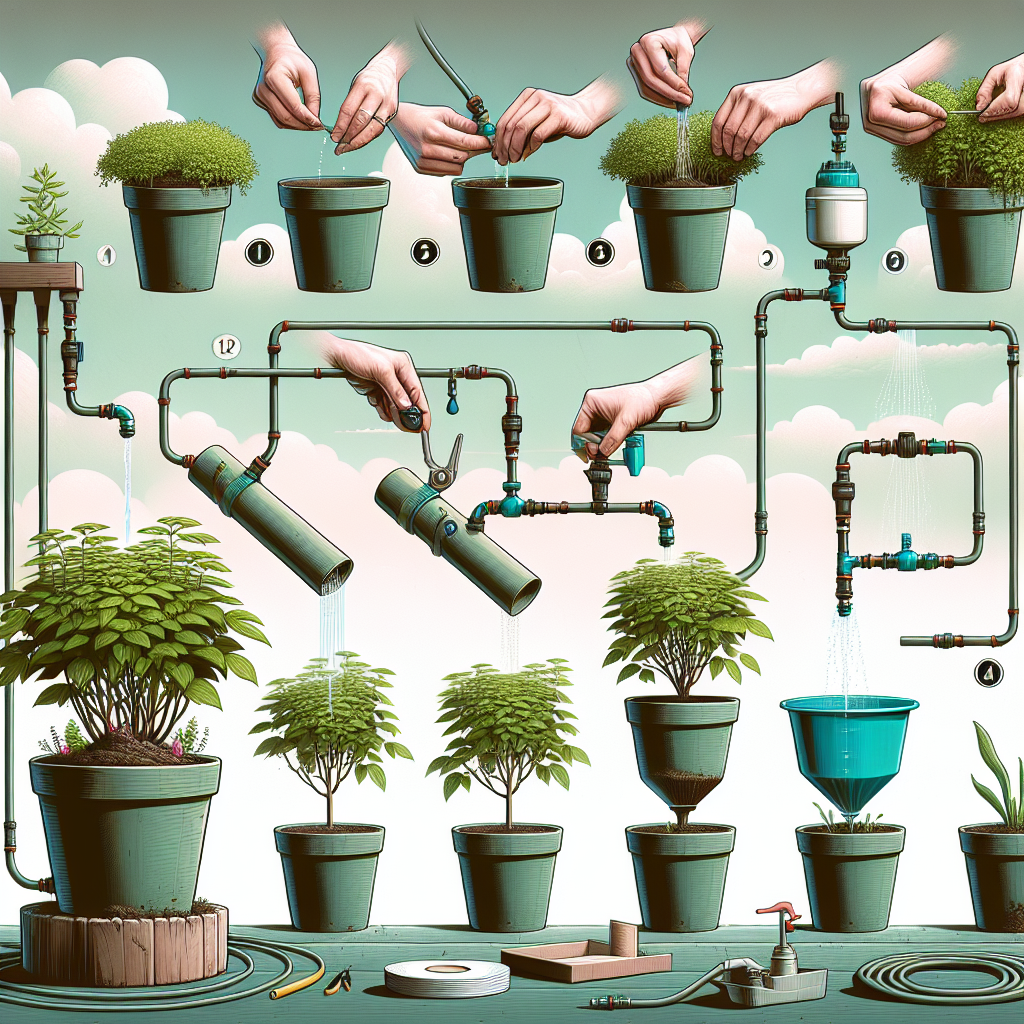The Art of Watering: Mastering Drip Systems for Container Gardens
Container gardens are a fantastic way to bring greenery and beauty into any space, whether you have a small balcony, patio, or even just a sunny windowsill. However, one of the biggest challenges faced by container gardeners is ensuring that their plants receive the proper amount of water. Overwatering can lead to root rot and other issues, while underwatering can cause plants to wilt and die. That’s where drip irrigation systems come in – these simple yet effective systems can help you water your container garden with precision and efficiency, ensuring that your plants thrive and flourish.
In this article, we will explore the art of watering container gardens using drip irrigation systems. We will discuss the benefits of using drip systems, how to set one up for your own container garden, and provide tips for mastering the art of watering with precision. Whether you are a beginner or an experienced gardener, mastering the art of watering with drip systems will take your container gardening skills to the next level. Let’s dive in!
**Benefits of Drip Irrigation Systems**
Drip irrigation systems offer several benefits for watering container gardens. One of the main advantages is water efficiency – unlike traditional watering methods such as hand watering or sprinklers, which can lead to water wastage through evaporation or runoff, drip systems deliver water directly to the plant’s roots where it is needed most. This not only conserves water but also helps prevent issues such as fungal diseases that can arise from wet foliage.
Another key benefit of drip irrigation systems is precision. By delivering water directly to the plant’s roots, you can ensure that each plant receives the right amount of moisture it needs to thrive. This is especially important for container gardens, where plants are confined to a limited space and may have different watering needs than those planted in the ground.
In addition to water efficiency and precision, drip irrigation systems also save time and effort in the long run. Once set up, these systems require minimal maintenance and allow you to automate the watering process so you can focus on other aspects of gardening. Overall, investing in a drip system for your container garden can lead to healthier plants, higher yields, and more enjoyable gardening experience.
**Setting Up a Drip System for Your Container Garden**
Setting up a drip system for your container garden is easier than you might think. Here are some steps to help you get started:
1. Choose the Right Components: To set up a basic drip system for your containers, you will need a few key components including a mainline tubing, emitter tubing (also known as soaker hose), connectors (such as tees and elbows), stakes or clips to hold emitters in place, and a timer if you want automated watering.
2. Plan Your Layout: Before installing your drip system, plan out where each plant will be located and how many emitters each plant will need based on its size and water requirements.
3. Assemble Your System: Begin by connecting your mainline tubing from your water source (such as a faucet or rain barrel) to your containers using connectors as needed. Then lay down emitter tubing around each plant’s root zone or along rows of containers.
4. Add Emitters: Attach emitters at appropriate intervals along the emitter tubing based on each plant’s individual needs – smaller plants may only need one emitter while larger plants may require multiple emitters.
5. Test Your System: Turn on your water source and check for any leaks or issues with water flow. Adjust emitters as needed to ensure even distribution of water across all containers.
By following these steps and customizing your drip system according to your specific needs, you can create an efficient watering system that will keep your container garden healthy all season long.
**Mastering The Art Of Watering With Precision**
Once you have set up your drip irrigation system for your container garden, mastering the art of watering with precision comes down to understanding your plants’ individual needs and adjusting your system accordingly.
1.Tip #1: Monitor Soil Moisture Levels: Check soil moisture levels regularly by sticking your finger into the soil – if it feels dry an inch below the surface, it’s time to water.
2.Tip #2: Adjust Watering Schedule: Pay attention to weather conditions such as temperature and humidity which can affect how often you need to water – during hot spells or windy days plants may need more frequent watering.
3.Tip #3: Consider Plant Placement: Group plants with similar watering needs together so you can adjust emitters accordingly – thirsty plants like tomatoes should be separate from drought-tolerant herbs like rosemary.
4.Tip #4: Customize Emitters Placement: Experiment with different emitter placements (such as placing them closer or further away from plants) until you find what works best for each individual plant’s root zone.
By incorporating these tips into your gardening routine and observing how your plants respond over time,you’ll become adept at maintaining optimal soil moisture levels through precise watering techniques
**FAQs**
Q: Can I use a drip system for all types of container plants?
A: Yes! Drip irrigation systems can be used for almost all types of container-grown plants including vegetables flowers herbs shrubsand trees
Q: How often should I run my drip system?
A:The frequency depends on factors such as plant type weather conditions soil typeand pot size Generally it’s recommended 2-3 times per week during hot summer months
Q:Is it possible overwater plants withdrip system?
A:While less likely than traditional methods overwatering still possible Make surecheck soil moisture levels frequently adjustemitter settings asnecessaryto avoidroot rot issues
Q:Is setting updrip irrigation complicated
A:Setup straightforward onceyou understand basics parts involvedtutorialsonlinevideosmay helpyou get started easily
QHow do I know if myplants getting enoughwater
AYourplants signs underwateringwilting yellowing leaves brittle stems signs overwateringsoggyroots moldy soil adjustedsystem accordingly
By following these Frequently Asked Questions (FAQs) aboutusinga dripsystemyourcontainergardenyoushould feelmoreconfidentinmaintainingyourplnts healthy thrivingconditions throughout growingseason













